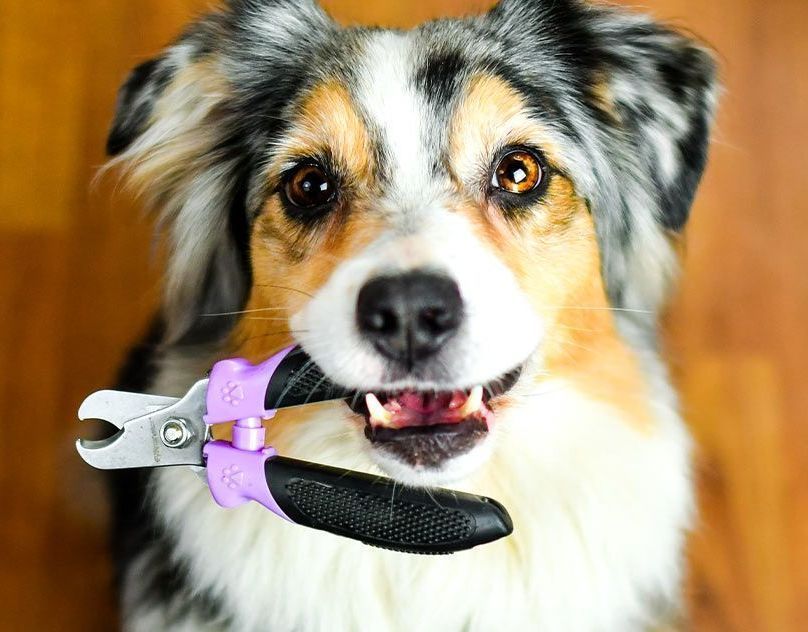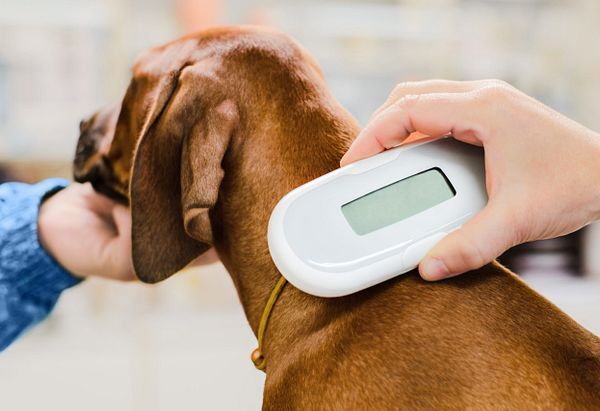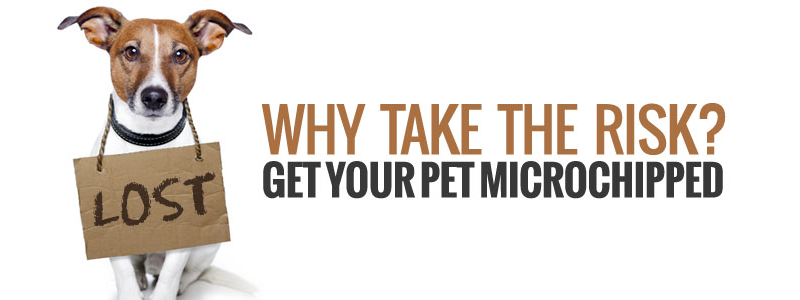Grooming and Microchipping Services

Nail trims for cats and dogs available by appointment only. $15 per animal.
Just about every pet owner worries about trimming their dog or cat’s nails at home. It’s often stressful to you, unfamiliar to them and we are always a bit concerned about our pets feeling pain. But, keeping your dog or cats’s nails in tip-top shape is an essential part of their overall well-being.

Anal gland expression for dogs available by appointment only. $30 per animal.
Let’s be honest, the idea of talking about or even thinking about anal gland expression probably seems uncomfortable at best and revolting at worst for even the most loving pet owner. It’s completely normal and understandable to be squeamish, but because the topic is so unappealing, it’s often overlooked despite being an important part of keeping your pet healthy. We never want pet owners to find themselves in a position where their pet needs emergency care because they weren’t familiar with the care their pet needs and didn’t know what signs to watch for.
We’ll cover everything you did (and didn’t) want to know about anal glands in our FAQ's below so you can be a more informed pet parent and take an active role in keeping your pet healthy from the tip of their nose to the tip of their tail.

Microchipping for cats and dogs available by appointment only. $40 per animal, includes initial registration.
No one likes to imagine their pet getting loose or going missing. Unfortunately, approximately 10 million pets are lost each year[1]. Without proper identification or a microchip, the likelihood of reuniting these pets with their families drops dramatically. Microchipping pets is a safe and simple way to ensure you are reconnected with your dog or cat should they ever go missing.
FAQS
Got questions? We’ve got answers.
Nail Trims
-
Why do dogs need nail trims?
Dog nail trimming is an essential part of helping to keep your pup happy and healthy. Long nails that hit the ground can reduce traction, cause the feet to splay out and put undue pressure on the toes. Plus, long nails can get caught in carpet and on bed linens and split or break, causing pain. Playing, running and even walking can become uncomfortable if your dog nails aren't trimmed appropriately.
The benefits of nail trimming for dogs also go beyond comfort. The pressure that long nails put on the toes can lead to tendon injuries and deformed feet or legs over time. It can even contribute to arthritis. Nails that are too long can also lead to infections caused by your dog chewing at their paws or bacteria entering through broken nails.
-
How often do dogs need nail trims?
How often your pup needs their nails trimmed depends on their activity level and lifestyle. Active dogs may only need a trim every three to four weeks to help with maintenance and prevent cracking. Dogs who live a plusher lifestyle—with little walking or hiking on hard surfaces like concrete or rock—will likely need a nail trim every two weeks.
Keep your dog’s age in mind, too. As our pups become seniors, their skin can thin, and sharp nails can injure them when they scratch themselves. Weekly touch-ups may be needed for a senior dog.
-
How can I tell if my dog needs a nail trim?
The best way to determine whether your dog is due for a nail trim is to closely examine their nails. Get down low on the ground and look to see whether your dog’s nails touch the ground. If they do, they are too long and should be trimmed. If you can hear your dog’s nails clicking on your wood or tile floors when they walk, this is also a clear indicator that the nails are too long.
-
Do cats need nail trims like dogs?
Whether your cat would benefit from nail trims, depends on the lifestyle and activity level of each individual cat. Outdoor cats should not have their claws trimmed as they need sharp claws to defend themselves from potential preditors and to aid in climbing to escape threats.
For indoor cats, traditionally we would recommend allowing your cat to maintain their nails naturally by providing a scratching post, however regular nail trimming can be essential to maintaining your cat’s overall well-being. Cats need their nails, but they can get too long, which can be uncomfortable for them and for you.
Some owners prefer to keep their cats nails trimmed to prevent unwanted damage to furnature, carpets, etc. if their cat does not like using a scratching post. Parents of small children or even the elderly may opt to keep their cats nails trimmed as well if their cat has a habit of using their nails while they play. Older cats may also need help with nail trims, because they tend to be less active and may be less inclined to use a scratching post. In these cats, trimming nails not only protects your furniture and home, it also helps prevent your cat’s nails from becoming overgrown. In severe cases, a cat’s nails can become so long that they actually curve around and grow into the paw pads, causing an infection. Regular nail trims can help prevent this from occurring.
-
How often do cats need nail trims?
Trimming your indoor cat’s nails regularly (every two to four weeks) can help minimize damage to your home, and lessen the chances of accidental scratches during play. Senior cats may need their nails trimmed more frequently.
Anal Gland Expressions
-
What are anal glands, and why does my pet have them?
Anal glands, which are frequently also referred to as anal sacs, are two small pockets located under the skin surrounding your pet’s anus. Their size can vary based on the size of your pet. The walls of your pet’s anal sacs are lined with sebaceous glands. Sebaceous glands are the same glands responsible for producing sweat, which is why the fluid found in anal glands has a distinctive and less than fresh odor that is generally described as “fishy”. When people think of anal glands, they commonly think of dogs, but anal glands are found in both dogs and cats, though cats are less likely to have anal glands issues when compared to their canine friends.
The glands produce fluid that is naturally excreted during bowel movements due to the pressure placed on the walls of the anus. Occasionally your pet may also excrete anal gland fluid during other activities. For example, pets that are nervous or frightened may also excrete anal gland fluid. This fluid can vary in color and texture and can range from clear, thin, and watery, to brown, gritty, and paste like.
While we don’t know the exact reason pets have anal glands, it’s believed that they’re a leftover from their much older ancestors and may serve as another way for your pet to mark their territory and spread their scent.
-
What are anal gland expressions, and why are they so important?
Anal gland expressions are the process of manually emptying the anal glands of your pets.
You might be thinking to yourself, “if my pet naturally empties their anal glands during bowel movements, why do they need anal gland expressions?” It’s a good question!
Many factors can influence your pet’s anal glands, and it’s common for pets to struggle with emptying their anal glands on their own, even if they have no other health issues. If illness, injury, medication, or diet change leads to a period of constipation or diarrhea for your pet, that can be enough to lead to an anal gland that needs to be expressed.
If not emptied or expressed regularly, the fluid in your pet’s anal glands can build up over time and harden or even lead to infection. With so many factors affecting the health of your pet’s anal glands, regular expressions are the best way to avoid the potential for more serious health issues.
-
How do I know if my dog needs their anal glands expressed?
Some of the more common signs that your dog may need their anal glands expressed include:
- Scooting or dragging their butt
- Discomfort while sitting
- Excessive licking, biting, or itching near the anus or base of the tail
- Straining while pooping
- An unpleasant and ongoing fishy smell coming from your dog
- Anal glands may appear swollen
-
How often does my dog need their anal glands expressed?
The number of times your dog needs to have their anal glands expressed depends on the individual. Some dogs never have an issue with their anal glands and are able to express them naturally.
Conversely, other dogs need their anal glands to be expressed a couple of times each year. Dogs who need manual expression more than once a month may need antibiotics, probiotics, or a change of diet to help prevent anal gland problems. Please contact your veterinarian for advice if your dog is frequently in need of manual expression as they may require medical treatment.
-
What are the symptoms of an impacted or infected anal gland?
The most obvious symptom of an impacted or infected anal gland is one you’re probably already familiar with; scooting. If you’ve ever witnessed your pet scoot across the floor or your carpet, there’s a good chance they were having issues with their anal glands at the time.
Other symptoms can include a sudden surge in bathing or chewing the impacted area, redness, swelling, and a noticeable odor coming from your pet. In severe cases, the anal glands may swell and take on a pimple like appearance and you may notice the presence of pus.
If you notice any of these symptoms, contact a veterinarian immediately, especially if you see pus, swelling, or inflammation. While an impacted anal gland is rarely an emergency, it can lead to infection and abscesses which require antibiotics and occasionally surgery. If you suspect an infection or abscess, seek medical care for your pet immediately. Never try to treat it on your own and do not express an infected or abscessed anal gland.
-
Can I express my pet’s anal glands myself?
It is entirely possible to express your pet’s anal glands on your own, though most pet owners would prefer to leave the anal gland expressions to a groomer, or vet office.
We recommend having your pet’s anal glands professionally expressed to ensure your pet’s glands are fully emptied. Having your pet’s anal glands professionally expressed is also safer for both you and your pet, especially if they’re not used to having their anal glands expressed. If your pet is not familiar with the process, they may become anxious and frightened, and an anxious or frightened pet is a pet that may bite, scratch, or struggle to get away.
If you are going to attempt expressing your pet’s anal glands on your own, remember to put safety first. Always have a second person to help you express your pet’s anal glands, take steps to prevent injuries to both you and your pet, and don’t hesitate to ask your veterinarian or groomer to demonstrate the proper technique.
Microchips
-
What is a microchip, and how does it work?
A microchip is a permanent method of electronic identification. This tiny transmitter is no larger than a grain of rice and holds a unique identification number. When scanned, the microchip transmits the ID number to the scanner. The ID number can then be entered into a database to find the contact information of the pet’s owner.
-
How can I find out if my pet is already microchipped?
You can stop up to the shelter or schedule an appointment with your local veterinarian to have your pet checked for a microchip. If your pet is microchipped, you will receive the contact information for the registry that it is associated with and will need to contact them for the next steps.
-
How old does my pet need to be to get microchipped?
Your pet can be microchipped as early as 8 weeks of age.
-
Does my pet have to be sedated to be implanted with a microchip?
Microchipping is a quick and simple procedure that can be done in just minutes, and sedation is not required. The microchip comes loaded into a sterile needle directly from the microchip provider. The needle is then inserted under the skin between your pet's shoulder blades, and the microchip is implanted just under the skin.
-
Can I track my pet with a microchip?
Microchips are NOT GPS devices, meaning you cannot locate or track your pet with them. In fact, the chip doesn’t do anything unless it is scanned. When microchips are scanned, the 9, 10 or 15-digit ID number is the only thing that is read by the scanner.
That ID number will then have to be searched to identify what microchip company your pet’s chip is registered with. From there, the animal shelter or vet clinic that scans your lost pet can contact the registry to notify them that the pet has been found. The microchip registry will then either provide your contact information to the veterinarian or shelter, or they will reach out directly to let you know that your pet has been found.
-
Does my pet still need to wear a collar and tags if they are microchipped?
Microchips are great for permanent identification that is tamper-proof, but nothing replaces a collar with up-to-date identification tags. If a pet is wearing a collar with tags when it's lost, it's often a very quick process to read the tag and contact the owner—if the information on the tag is accurate. But if a pet is not wearing a collar and tags, or if the collar is lost or removed, then the presence of a microchip might be the only way the pet's owner can be found.
Your pet's rabies tag should always be on its collar, so people can quickly see that your pet has been vaccinated for this deadly disease. Rabies tag numbers also allow tracing of animals and identification of a lost animal's owner, but it can be hard to have a rabies number traced after veterinary clinics or county offices are closed for the day. The microchip databases are online or accessed by telephone, and are available 24/7/365.
-
Do I need to "maintain" my pet's microchip?
Once your pet is microchipped, there are only three things you need to do:
- Make sure the microchip is registered.
- Ask your veterinarian to scan your pet's microchip at least once a year to make sure the microchip is still functioning and can be detected.
- Keep your registration information up-to-date.
If you've moved, or if any of your information (especially your phone number or address) has changed, make sure you update your microchip registration in the manufacturer's database as soon as possible.
August 15 is designated as Check the Chip Day each year, and that’s the perfect time to take a few minutes to check your pet’s microchip registration information and update it if necessary.
-
Do microchips expire?
Pet microchips are designed to last the lifetime of your pet. The microchip does not contain a battery and will not break down in the body. Instead, it only becomes active when detecting radio waves from a scanner. Most microchips will stay in place once inserted under the skin. However, in rare cases, microchips can migrate to other parts of the body as your pet ages. This is why clinics and shelters scan the entire animal when looking for a chip.
-
Can my pet's microchip fail?
As with almost anything, it's not a foolproof system. Although it's very rare, microchips can fail and become undetectable by a scanner. Problems with the scanners also can occur, though they’re not common. Human error, such as improper scanning technique or incomplete scanning of an animal, can also lead to failure to detect a microchip.
There also are animal-related factors that can make it difficult to detect a microchip, including animals that won't stay still while being scanned; the presence of long, matted hair at or near the microchip site; excessive fat deposits in the area where the chip is implanted; and a metal collar or a collar with a lot of metal on it. All of these can interfere with the scanning and detection of the microchip.



